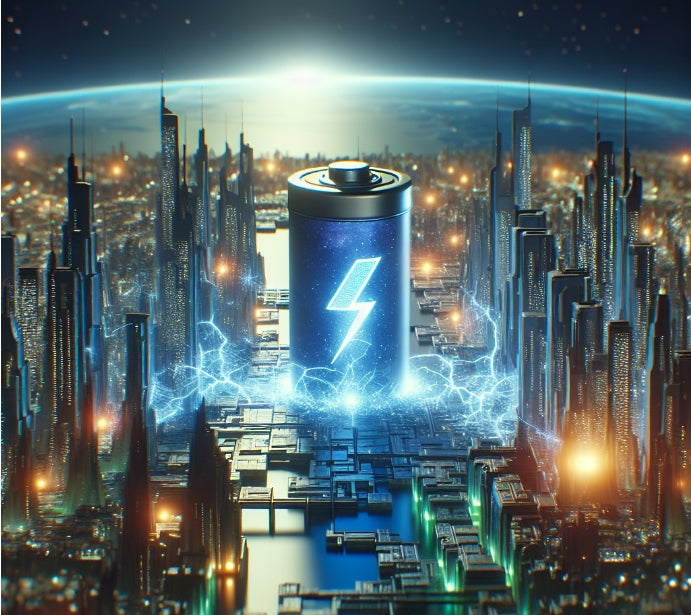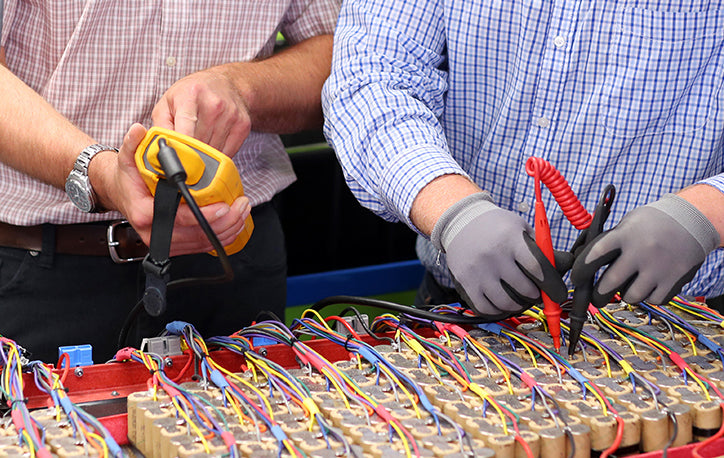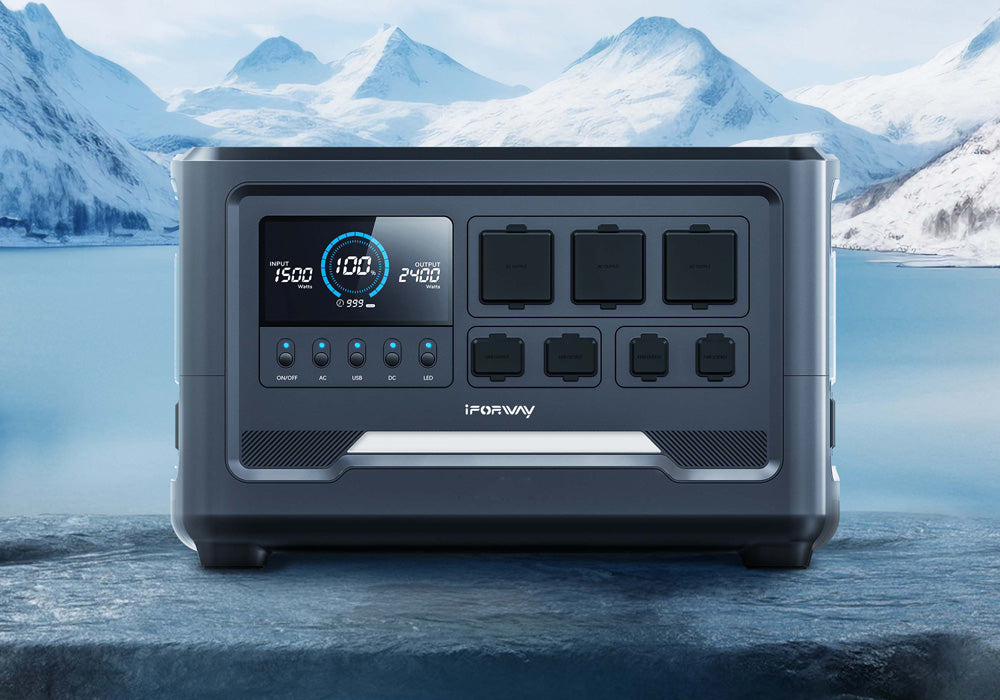
The pursuit of sustainable and efficient energy storage solutions has become a cornerstone of the global transition towards a greener future. While lithium-ion batteries have dominated the landscape, their reliance on scarce and geographically concentrated resources has spurred a search for alternative technologies. Enter sodium batteries, a promising contender poised to revolutionize energy storage systems. With abundant and readily available sodium resources, these batteries offer a compelling solution to address the limitations of lithium-ion technology, paving the way for a more sustainable and accessible energy future.
Introduction: The Growing Need for Efficient Energy Storage
The world's insatiable appetite for energy continues to grow, driven by expanding populations, industrialization, and the increasing demand for modern conveniences. However, this surge in energy consumption is placing immense pressure on existing energy infrastructure, particularly in the realm of energy storage. Traditional energy sources, such as fossil fuels, are facing environmental concerns and resource limitations, while renewable sources like solar and wind power are intermittent and require reliable storage solutions to ensure consistent energy supply. This growing need for efficient energy storage has become a critical challenge, demanding innovative technological advancements to bridge the gap between energy production and consumption.
The demand for efficient energy storage is not limited to the power grid. The rise of electric vehicles, portable electronics, and other energy-intensive applications has further amplified the need for compact, high-capacity storage solutions. Furthermore, the integration of renewable energy sources into the grid necessitates reliable storage systems to manage fluctuations in supply and demand. This complex interplay of factors underscores the urgency for developing advanced energy storage technologies that are cost-effective, safe, and environmentally sustainable. The pursuit of efficient energy storage is no longer just a technological pursuit, but a crucial step towards building a more sustainable and resilient energy future.
Sodium Batteries: A Promising Alternative to Lithium-Ion
Sodium-ion batteries, a burgeoning technology in the energy storage landscape, present a compelling alternative to the ubiquitous lithium-ion batteries. The allure of sodium lies in its abundance, low cost, and widespread availability, offering a more sustainable and economically viable solution for large-scale energy storage applications. Sodium-ion batteries leverage the inherent properties of sodium, which is readily available in the earth's crust and does not require the complex and often environmentally problematic extraction processes associated with lithium. This makes sodium-ion batteries a promising option for grid-scale energy storage, where cost and sustainability are paramount.
Furthermore, sodium-ion batteries boast a unique set of advantages. They exhibit exceptional thermal stability, mitigating the risk of thermal runaway, a critical safety concern in lithium-ion batteries. Additionally, their inherent safety features, stemming from the non-flammable nature of sodium, make them particularly suitable for applications where safety is paramount. While sodium-ion batteries currently lag behind lithium-ion in terms of energy density, ongoing research and development efforts are rapidly closing this gap, paving the way for their widespread adoption in various sectors, from electric vehicles to portable electronics.
Advantages and Challenges of Sodium Battery Technology
Sodium-ion batteries offer several advantages over their lithium-ion counterparts, particularly in terms of cost and resource availability. Sodium is abundant and inexpensive, making it a more sustainable and readily accessible resource for battery production. Moreover, sodium-ion batteries exhibit excellent thermal stability, reducing safety concerns associated with lithium-ion batteries. Their ability to operate at higher temperatures also makes them suitable for applications in extreme environments. However, sodium-ion batteries face challenges in terms of energy density and cycle life. While advancements have been made in improving these aspects, they still lag behind lithium-ion batteries in terms of performance. The lower energy density translates to a smaller capacity for storing energy, limiting their use in applications requiring long run times.
Despite these limitations, ongoing research and development efforts are actively addressing the challenges of sodium-ion battery technology. Scientists are exploring new electrode materials and electrolytes to enhance energy density and cycle life. The potential for cost-effective, sustainable, and safe energy storage solutions makes sodium-ion batteries a promising alternative to lithium-ion batteries, particularly for grid-scale energy storage and other applications where high energy density is not a primary concern. As research progresses, sodium-ion batteries are poised to play a significant role in the transition towards a more sustainable and reliable energy future.
Applications of Sodium Batteries in Energy Storage Systems
Sodium batteries, with their abundance and low cost, are emerging as a promising alternative to lithium-ion batteries for large-scale energy storage applications. Their potential lies in grid-scale energy storage, where they can help stabilize the power grid by storing excess energy generated from renewable sources like solar and wind. This ability to smooth out fluctuations in energy supply is crucial for ensuring a reliable and sustainable energy system. Sodium batteries can also be deployed in off-grid applications, providing power to remote communities or powering electric vehicles in areas with limited access to charging infrastructure.
Beyond their cost-effectiveness and abundance, sodium batteries offer several advantages for energy storage systems. Their high current density allows for rapid charging and discharging, making them suitable for applications requiring quick energy delivery. Additionally, they exhibit excellent thermal stability, reducing the risk of fire hazards and enhancing safety. While sodium batteries currently face challenges in terms of energy density and cycle life compared to lithium-ion batteries, ongoing research and development efforts are actively addressing these limitations, paving the way for their widespread adoption in the future.
Conclusion: The Future of Sodium Batteries and Their Impact on the Energy Landscape
The emergence of sodium batteries presents a compelling opportunity to diversify the energy landscape and address the growing demand for sustainable energy storage. Their abundance, low cost, and environmental friendliness make them a promising alternative to lithium-ion batteries, particularly for large-scale grid storage and stationary applications. While challenges remain in terms of energy density and cycle life, ongoing research and development efforts are continuously improving their performance. The future holds significant potential for sodium batteries to play a crucial role in the transition to a cleaner and more sustainable energy future.
As the world strives to achieve carbon neutrality and reduce reliance on fossil fuels, sodium batteries are poised to become a key player in the energy transition. Their ability to provide cost-effective and scalable energy storage solutions will be instrumental in integrating renewable energy sources, enhancing grid stability, and supporting the electrification of transportation. By leveraging the advantages of sodium batteries, we can unlock a more resilient and sustainable energy system, paving the way for a brighter and cleaner future.
Recent Posts
Blog Tags
How Competitive Electricity Markets Help Business Energy Buyers Optimize Costs and Efficiency
As the future of business energy procurement moves toward greater sustainability and efficiency, competitive electricity markets will play a vital role in shaping the energy solutions of tomorrow.
Global Portable Power Station Market Analysis: Growth Trends, Size Forecast
The portable power station market is experiencing rapid growth, driven by the demand for clean energy, the surge in outdoor activities, and increasing awareness of power security. In the future, portable power stations will evolve toward higher power, smart features, and multifunctionality, providing users around the world with more reliable energy solutions.
Weight Optimization in Portable Power Stations
Weight optimization is a crucial factor in the development of portable power stations. By leveraging lightweight materials and high-energy-density batteries, manufacturers are creating more efficient and user-friendly power solutions. As the market continues to evolve, we can expect even more advanced, lightweight options for outdoor and emergency use.












